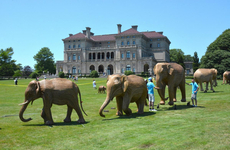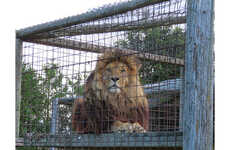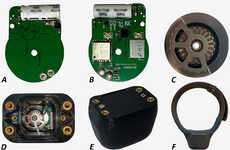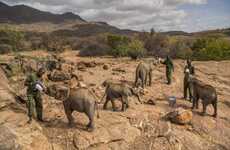
These Fake Tusks Help Researchers Track the Illegal Ivory Trade
Katherine Pendrill — September 4, 2015 — Tech
References: nationalgeographic & fastcoexist
Researchers in Africa recently developed a new way of tracking the illegal ivory trade across the continent. Each year, more than 30,000 African elephants are killed for their tusks. These tusks are then traded between warlords in various African countries.
In order to safely track the illegal ivory trade, researchers developed a series of fake elephant tusks. These realistic tusks feature GPS sensors that allow researchers to track the products as they move from one warlord to the next. The project allows researchers and journalists to better understand how tusks are traded for arms and other illicit equipment. The fake tusks also demonstrate that foreign buyers are contributing to the steady growth of the ivory trade.
The information collected through the project may help researchers better understand how to combat illegal poaching and stem the flow of illegal ivory.
In order to safely track the illegal ivory trade, researchers developed a series of fake elephant tusks. These realistic tusks feature GPS sensors that allow researchers to track the products as they move from one warlord to the next. The project allows researchers and journalists to better understand how tusks are traded for arms and other illicit equipment. The fake tusks also demonstrate that foreign buyers are contributing to the steady growth of the ivory trade.
The information collected through the project may help researchers better understand how to combat illegal poaching and stem the flow of illegal ivory.
Trend Themes
1. Fake-tusk Tracking - Developing and using realistic fake tusks with GPS sensors to track the illegal ivory trade.
2. Understanding Trade Routes - Gaining insights into the movement of tusks between warlords and foreign buyers through tracking technology.
3. Combatting Illegal Poaching - Using collected information to develop strategies to prevent illegal poaching and disrupt the flow of illegal ivory.
Industry Implications
1. Conservation - Applying tracking technology to protect endangered species and combat the illegal wildlife trade.
2. Journalism - Using tracking technology to expose and report on illegal activities, such as the ivory trade.
3. Technology - Developing innovative solutions, like fake tusks with GPS sensors, to address and combat illicit trades.
0.5
Score
Popularity
Activity
Freshness























